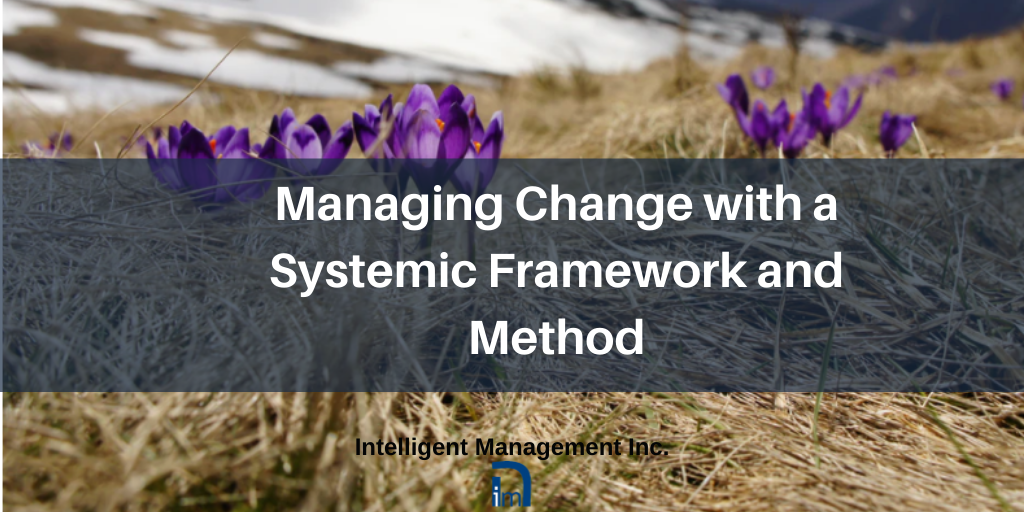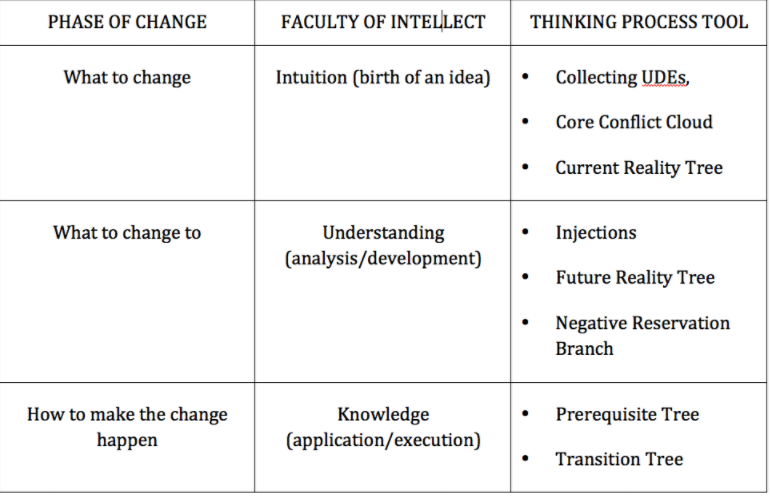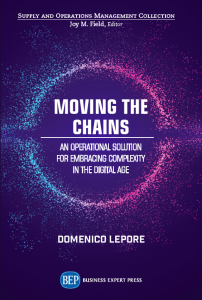
Whenever we think about managing change, it can’t just be abstract. We need some kind of framework and method. It is highly useful to consider three phases that happen when we introduce change, as identified in the Theory of Constraints (TOC):
- what to change
- what to change to
- how to make the change happen
For each of these phases, there is a powerful Thinking Process from TOC. Let’s look at the three phases.
Managing Change Phase One: What to change
In the first phase of change we have intuition about the current state of reality that needs change. This intuition is fuzzy and the blur is originated by the many emotions triggered by ‘undesirable effects’ in our life or that of an organization. These effects are the light bulbs going on and off to warn us that a change is needed. We can capture the intuition stemming from these effects by summarizing them into a Core Conflict Cloud diagram, carefully surfacing all the underlying assumptions (mental models) and limiting beliefs that make up our current reality.
Once we have this ‘cognitive snapshot’ of our situation, we can decide that we want to change this reality.
Managing Change Phase Two: What to change to
In this second phase we identify the solutions (known as ‘Injections’ in TOC) to move us forward. We derive these solutions organically by invalidating the assumptions, or mental models, that underlie the Core Conflict we have already verbalized. These injections point in the right direction and make us see where we want to go more clearly. They are the road signs to the future.
Now we need a full-blown picture of the road in front of us. Not only that, but we must ensure that this picture is a) complete, and b) highlights all the possible pitfalls. This is achieved through understanding (analysis/development). Understanding is the human ability to imagine and plan beyond the contingencies of the present and towards a meaningful future. The Thinking Process called the Future Reality Tree (FRT) and the Negative Branch Reservation (NBR) support and enhance our understanding.
Managing Change Phase Three: How to make the change happen
At this stage, the Future Reality we desire has been mapped out, the potential pitfalls identified and a precise strategy crafted. All we need now is a step-by-step procedure to walk into the future. The processes for this can be achieved with the Prerequisite Tree (PRT) and and the Transition Tree (TRT). They map out the Intermediate Objectives to achieve the goal as well as the precise actions to take and the logic behind them. They are ideal visual tools for groups to share.
These Thinking Processes provide a protocol with detailed instructions. On a deeper level, to operate these procedures requires a new kind of knowledge. This knowledge triggers a higher level of consciousness that becomes an active vehicle of self-actualization. This knowledge, and the power that stems from it, address the fundamental drivers that move us towards a better future reality and becoming one with our most authentic self.
Towards a different use of the mind
It may well be that we are currently cognitively limited in our ability to cope with change. The mechanisms of our cognition and our ability to leverage emotions and rationality to facilitate learning are inadequate to support the pace at which knowledge is being generated.
If we want to close the gap between the knowledge available and what we are willing to use, we have to tap into a different use of the mind. We have to learn how to see change as not simply something to be feared, but a natural, intrinsic part of our life. When we learn how to use our intuition and intellect to implement consistent action, change is no longer a threat and a hazard; it is a continuous source of new opportunities.
The Thinking Processes can be learned and applied with great success. Intelligent Management Inc. has been transferring these processes to leaders and organizations since they were first developed.

More from this series on Change:
Why Is Managing Change So Hard and How Can We Make it Easier?
Effective Decision Making? Understand Your Driver Needs First
Decisions and Change: Thinking Processes for a Complex World
Contact: intelligentmanagement@sechel.ws
SCHEDULE AN INTRODUCTORY CALL WITH US







Leave a Reply